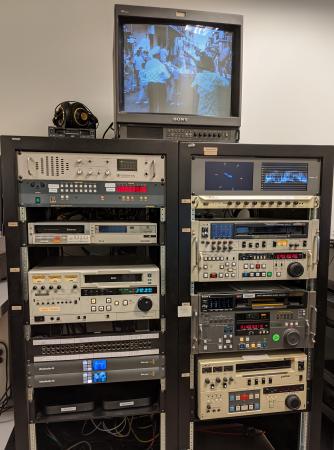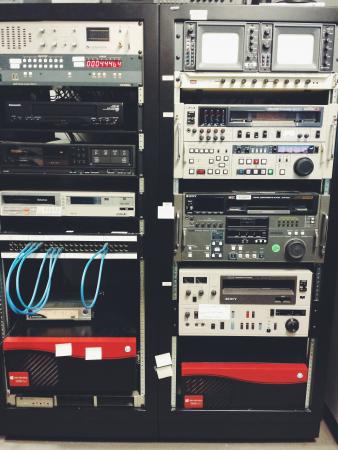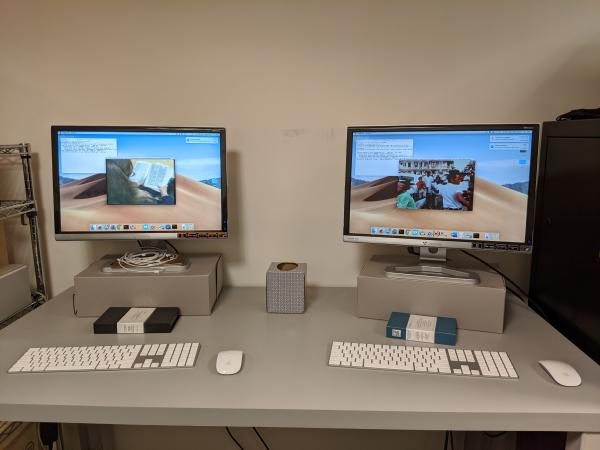In 2008, the Smithsonian Institution Archives acquired two machines that allowed us to officially begin preservation-level digitization of videotapes in-house, saving us countless hours coordinating digitization with vendors, and giving us the ability to deliver material to researchers faster. The machines contained semi-automated video digitization software that would take the analog signal from a video deck and transcode it into a digital video file in almost real time. Using these machines, the Archives created Motion JPEG 2000 files in a MXF wrapper as our standard preservation format because it allowed us to create files with mathematically lossless compression. This is important for preservation files because it allows us to download, open, close, and save the files numerous times without losing any data.

Shortly after we began using the equipment, the manufacturer was acquired by another company, which was then sold in 2014. The new company continued maintenance on the machines until 2016, when it stopped supporting the product altogether, and we were directed to a different vendor for support. At that point, we knew it was time to start thinking about upgrading our video digitization equipment to something new.
Around the same time, several other units around the Smithsonian began performing their own in-house video digitization using an analog-to-digital converter and open source software. They also started moving away from Motion JPEG 2000 and towards the video codec FFV1 in a Matroska wrapper. FFV1 is another video preservation codec that touts mathematically lossless compression, but the files are generally processed much faster than Motion JPEG 2000, which saves time when creating access files for researchers.

Fast forward to 2018. At the Association of Moving Image Archivists (AMIA) annual conference, a group of archivists presented a panel on vrecord, an open source tool used to digitize analog videotapes. At this point, the Archives wasn’t quite ready to make the switch from Motion JPEG 2000 to FFV1, so one of the appeals of vrecord was that it would allow us to utilize more cost-effective hardware and software to create Motion JPEG 2000 files while still having the flexibility to switch to FFV1 at any point without additional cost. We purchased the necessary equipment to make the switch to our new, more cost-effective digitization setup, and in January 2020, we officially decommissioned the original hardware!

Our new setup features two analog-to-digital converters hooked up to Mac Minis that have vrecord installed. As part of the switch to open source software, we also decided to move to FFV1 in a Matroska wrapper as our preservation file of choice. This will allow us to take advantage of the features that vrecord offers, such as embedding the digitization logs directly into the video file as opposed to keeping a separate log file. Additionally, one of the issues that we encountered early on with the original hardware was that we could not have the machines hooked up to the Smithsonian network because there was the possibility of periodic updates from our central IT office breaking the software. With the new set up, the Mac Minis are hooked up to the network, allowing us to more easily update vrecord and other software when necessary, and shortening the process for getting the video files into our centrally managed Digital Asset Management System (DAMS). I’m excited to use the new software and equipment to continue preserving the Archives robust video collection!
Related Resources
- Digital Video Preservation: Continuing the Conversation, by Kira Sobers, The Bigger Picture, Smithsonian Institution Archives
- The Power of Collaboration, by Kira Sobers, The Bigger Picture, Smithsonian Institution Archives
Produced by the Smithsonian Institution Archives. For copyright questions, please see the Terms of Use.

Leave a Comment